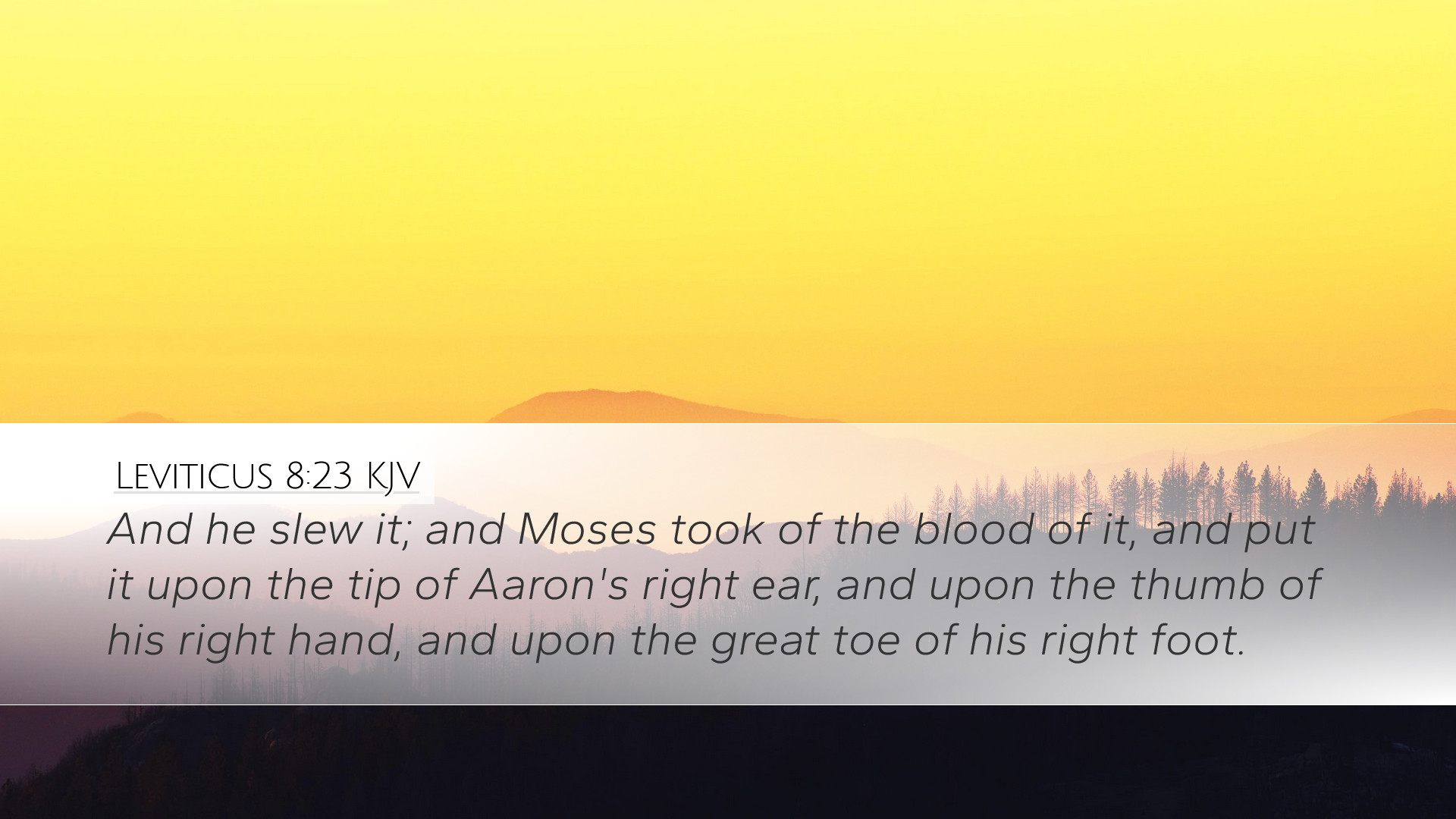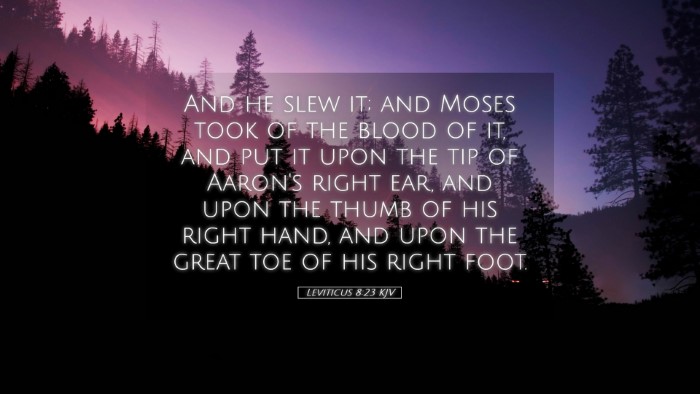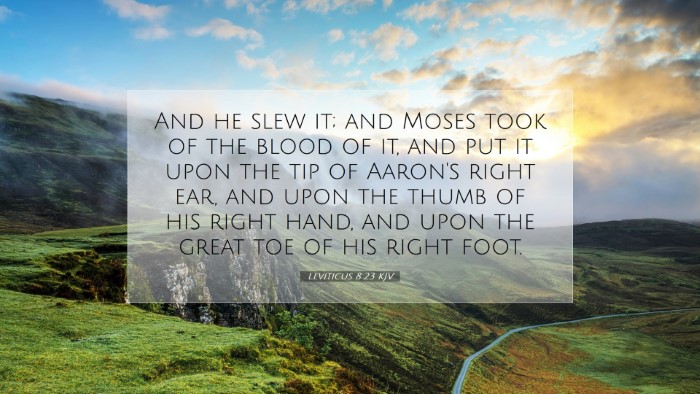Commentary on Leviticus 8:23
Verse: "And he killed it; and Moses took of the blood of it, and put it upon the tip of Aaron's right ear, and upon the thumb of his right hand, and upon the great toe of his right foot."
Introduction
The passage from Leviticus 8:23 details a significant moment in the consecration of Aaron and his sons as priests. This act is not merely a ritual; it embodies deep theological truths and reflects the profound importance of priesthood in the Israelite community. This commentary synthesizes insights from various public domain commentaries to illuminate the rich meaning behind this ceremonial act.
The Act of Consecration
The ceremony described in this verse is essential in establishing Aaron and his sons in their priestly roles. As Matthew Henry notes, the act of killing the ram and the application of its blood signify the necessity of sacrifice in the approach to God. The blood symbolizes life and atonement, emphasizing that any service before the Lord must be sanctified through sacrifice.
Significance of the Blood
In Levitical law, blood holds immense significance, representing cleansing and dedication. Albert Barnes remarks that putting blood on the right ear, hand, and toe symbolizes the totality of a priest's service—his hearing, his work, and his walk must all be consecrated to the service of God. Each application of blood underscores that every aspect of the priest's life is to be dedicated and set apart for the sacred duties entrusted to him.
Symbolism of the Right Side
The choice to apply the blood to the right side bears theological implications. Adam Clarke explains that the right side in biblical language often represents power and authority. This act signifies that the priest's authority comes from being cleansed and empowered by God. It also indicates that the priest is to act in righteousness, with his actions aligned with divine will.
The Priesthood and Its Functions
The priesthood, instituted in this passage, serves as a mediator between God and the people. Aaron and his sons are to administer the sacrifices, teach God's laws, and represent the people in their worship. Their consecration through this ritual highlights the holiness required for such duties. Matthew Henry emphasizes that true service to God comes from a heart and body sanctified by Him.
The Role of Worship
The priests' ministry is deeply intertwined with the worship practices of Israel. Albert Barnes reminds us that worship in the Old Testament not only involved ritual acts but also intimate fellowship with God. The blood signifies that this relationship is made possible through atonement, and the priests must be diligent in their roles to maintain this connection for the Israelites.
Holiness and Obedience
The act of consecration also reflects the broader theme of holiness in the book of Leviticus. Adam Clarke posits that the emphasis on holiness in the priesthood signifies God's demand for His people to be set apart. Those who desire to serve God must first submit to His standards of holiness and obedience, as echoed throughout the laws given in the Levitical code.
Lessons for Modern Believers
This ancient rite, while specific to the Levitical priesthood, offers several lessons for today's believers:
- Dedication: Just as Aaron and his sons were dedicated for service, believers are called to present their lives as a living sacrifice to God (Romans 12:1).
- Consecration: The act of setting ourselves apart for God and His service is crucial; we should strive to align our ears, hands, and feet to His will.
- Understanding Sacrifice: The blood signifies the cost of discipleship; our relationship with God is rooted in His ultimate sacrifice through Christ.
Conclusion
Leviticus 8:23 is more than a historical account; it speaks volumes about the nature of priestly service, the importance of consecration, and the call to holiness. For pastors, theologians, and scholars, understanding this text deepens the appreciation of both the old covenant and God's ultimate plan in Christ. The blood applied to the priest's right ear, hand, and toe is a striking reminder that service to God must be blood-bought and spirit-led, a truth that reverberates throughout Scripture.


